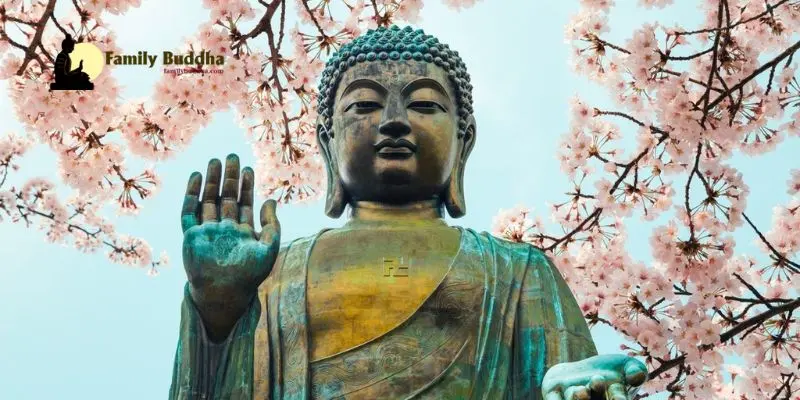“Đi đâu mà vội mà vàng, mà vấp phải đá, mà quàng phải dây” – this Vietnamese proverb, emphasizing the importance of patience and mindfulness, reflects the essence of the Buddhist journey towards enlightenment. It’s not a race, but a gradual unfolding through four distinct stages, each unveiling deeper truths about ourselves and the universe.
What are the Four Stages Of Enlightenment in Buddhism?
The concept of enlightenment, often compared to awakening from a dream, is central to Buddhism. It signifies liberation from suffering and the cycle of rebirth, achieved by transcending ignorance and delusion. The path to this ultimate goal is often described through the Four Stages Of Enlightenment, each marked by specific attainments and insights. These stages, while challenging, offer a profound roadmap for spiritual growth and self-realization.
Unveiling the Path: The Four Stages Of Enlightenment
The journey begins with the first glimpse of enlightenment, like a single lotus petal unfurling. Let’s delve into each stage, exploring their significance and the transformations they signify:
1. Sotapanna: The Stream-enterer
Imagine standing at the edge of a river, the current representing the path to enlightenment. The Sotapanna has stepped into the stream, their direction clear. This stage marks the first genuine experience of awakening, often accompanied by profound joy and unshakeable faith in the Buddha’s teachings.
Key Characteristics of a Sotapanna:
- Diminished doubts: The Sotapanna experiences a significant reduction in doubt towards the core teachings of Buddhism, including karma, rebirth, and the Four Noble Truths.
- Weakened fetters: Three mental “fetters” that bind us to suffering – self-identity view (sakkaya-ditthi), doubt or uncertainty (vicikiccha), and clinging to rites and rituals (silabbata-paramasa) – are significantly weakened.
- Guaranteed enlightenment: Having entered the stream, the Sotapanna is assured of reaching full enlightenment within a maximum of seven lifetimes, propelled by their understanding and practice.
2. Sakadagami: The Once-Returner
The Once-Returner, having ventured further down the river, has significantly lessened the current’s pull. Their attachment to desire and aversion weakens, and they are likely to return to the earthly realm only once more before achieving full enlightenment.
Key Characteristics of a Sakadagami:
- Further weakened fetters: The remaining five fetters – sensual desire (kamacchanda), ill will (vyapada), conceit (mana), restlessness (uddhacca), and ignorance (avijja) – are further weakened, though not entirely eradicated.
- Reduced attachment: The Sakadagami experiences a significant reduction in attachment to sensual pleasures and material possessions, their focus shifting towards spiritual pursuits.
- Increased compassion: With diminished ego-centricity, their capacity for compassion and loving-kindness grows, extending towards all beings.
3. Anagami: The Non-Returner
The Non-Returner, now navigating the river with grace, is on the verge of liberation. They have severed the remaining five fetters to a significant degree and will no longer be reborn into the earthly realm. Their next life will be in a higher, purer plane of existence, where they will attain full enlightenment.
Key Characteristics of an Anagami:
- Freedom from lower fetters: The five lower fetters that bind beings to the cycle of rebirth are completely eradicated.
- Elevated mental states: Anagamis experience profound states of equanimity, peace, and wisdom, dwelling in higher realms of consciousness.
- Preparation for final liberation: This stage marks the final preparation for complete liberation from suffering, a stepping stone to the ultimate goal of enlightenment.
4. Arahant: The Worthy One
The Arahant, having reached the opposite shore, embodies complete enlightenment. They have extinguished all ten fetters, liberated from the cycle of rebirth and suffering. This is the pinnacle of Buddhist practice, a state of profound peace, wisdom, and unwavering compassion.
Key Characteristics of an Arahant:
- Complete liberation: Arahants are entirely free from suffering, desire, and attachment. They have transcended the cycle of birth and death.
- Perfect wisdom: They possess complete understanding of reality, seeing things as they truly are, free from delusion and ignorance.
- Unconditional compassion: Arahants embody boundless compassion and loving-kindness, radiating it unconditionally to all beings.
FAQs about the Four Stages Of Enlightenment:
1. Can anyone achieve the four stages of enlightenment?
Yes, the path to enlightenment is open to all, regardless of background or circumstances. It requires dedicated practice, unwavering commitment, and the guidance of wise teachers.
2. How long does it take to progress through the four stages?
There’s no fixed timeline. It depends on individual karma, effort in practice, and skillful means. The journey can span lifetimes, emphasizing the importance of patience and persistent effort.
3. Is it necessary to attain all four stages in this lifetime?
While attaining full enlightenment in this lifetime is a possibility, it’s not a requirement for all. Progressing through even the initial stages brings significant benefit, reducing suffering and cultivating wholesome qualities.
4. What are the benefits of understanding the four stages of enlightenment?
Understanding these stages provides a clear framework for spiritual progress. It can inspire and motivate us on our own journeys, offering a map to navigate the path towards greater peace, wisdom, and liberation.
Embracing the Journey, Step by Step
Remember, the journey of a thousand miles begins with a single step. The four stages of enlightenment, while representing significant milestones, are best approached as guideposts on a continuous path. Every act of kindness, every moment of mindfulness, brings us closer to the ultimate goal – awakening to our true nature and living a life filled with wisdom, compassion, and liberation.









